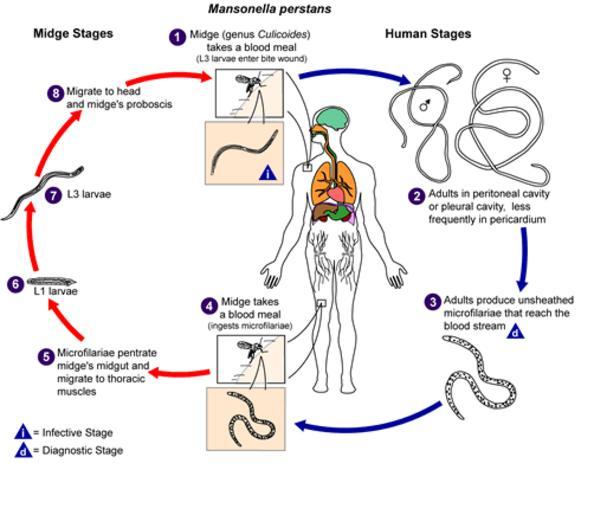MAKE A MEME
View Large Image

| View Original: | Mansonella_perstans_LifeCycle.gif (502x435) | |||
| Download: | Original | Medium | Small | Thumb |
| Courtesy of: | commons.wikimedia.org | More Like This | ||
| Keywords: Mansonella perstans LifeCycle.gif Filariasis Life cycle of Mansonella perstans During a blood meal an infected midge genus Culicoides introduces third-stage filarial larvae onto the skin of the human host where they penetrate into the bite wound They develop into adults that reside in body cavities most commonly the peritoneal cavity or pleural cavity but less frequently in the pericardium The size range for female worms is 70 to 80 mm in length and 120 μm in diameter and the males measure approximately 45 mm by 60 μm Adults produce unsheathed and subperiodic microfilariae measuring 200 by 4 5 μm that reach the blood stream A midge ingests microfilariae during a blood meal After ingestion the microfilariae migrate from the midge's midgut through the hemocoel to the thoracic muscles of the arthropod There the microfilariae develop into first-stage larvae and subsequently into third-stage infective larvae The third-stage infective larvae migrate to the midge's proboscis and can infect another human when the midge takes a blood meal http //www dpd cdc gov/dpdx/images/ParasiteImages/A-F/Filariasis/M_perstans_LifeCycle gif PD-USGov Mansonella perstans CDC lifecycles Parasitic life cycles of nematodes | ||||